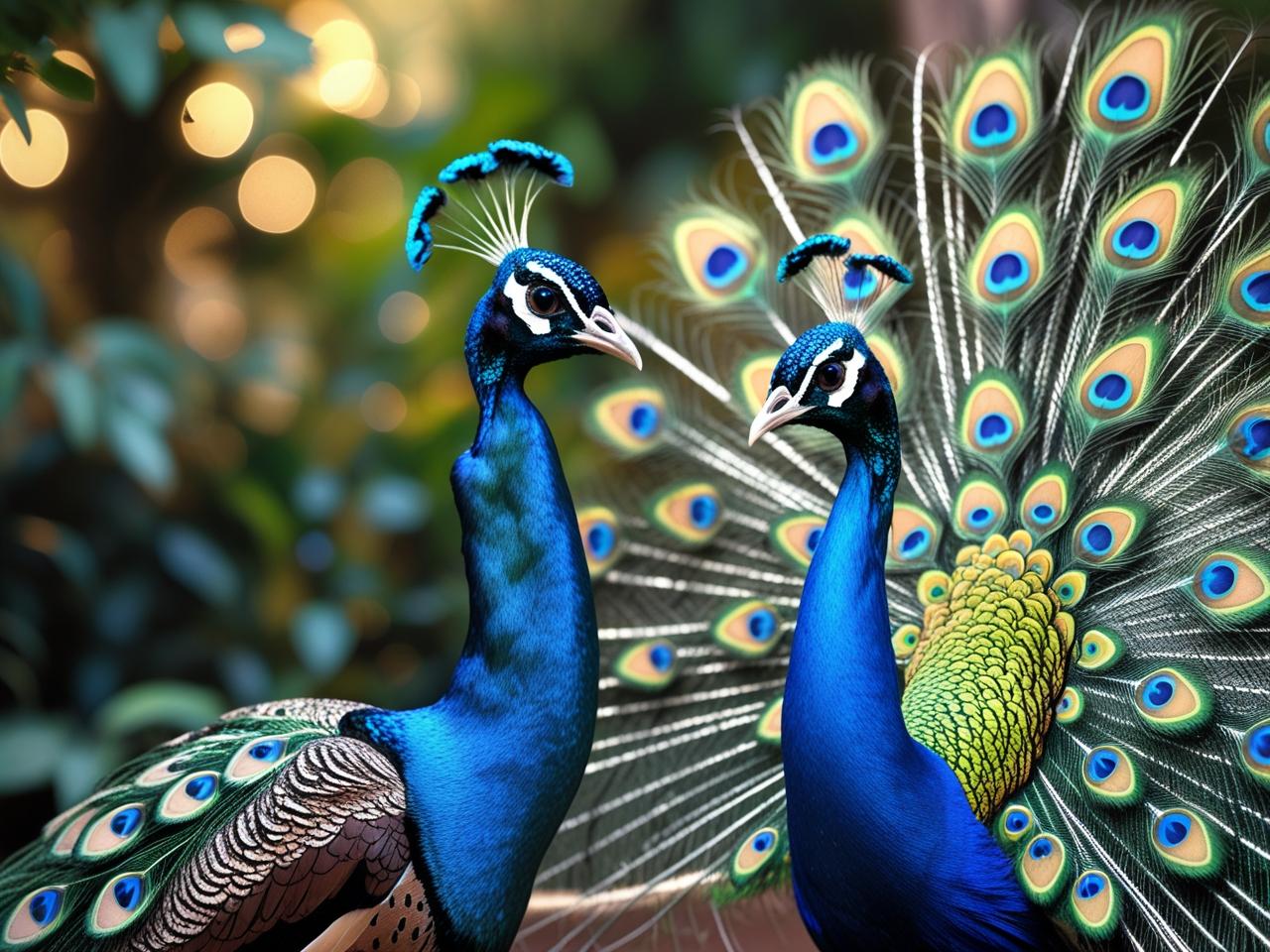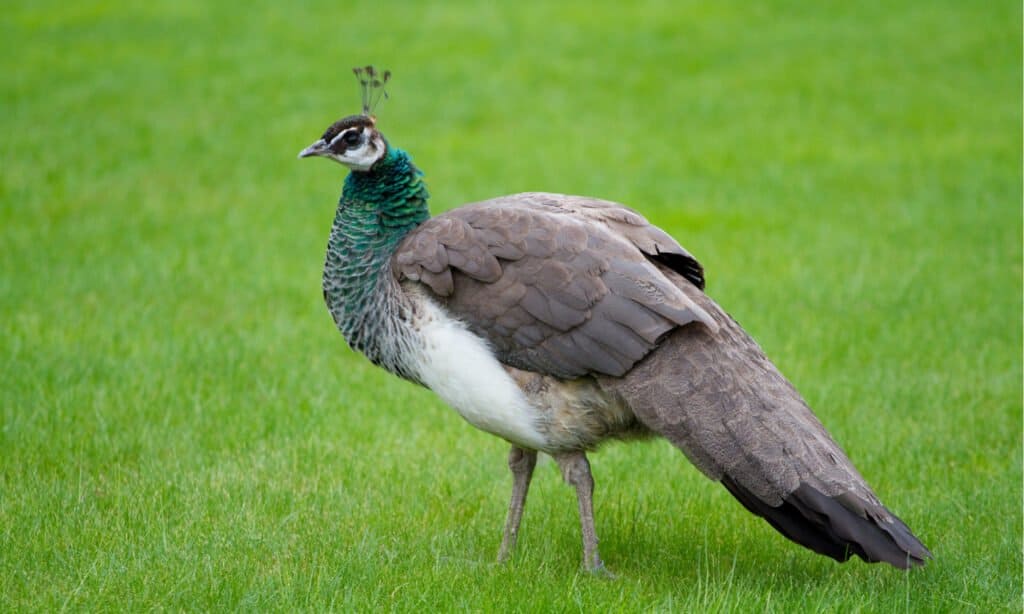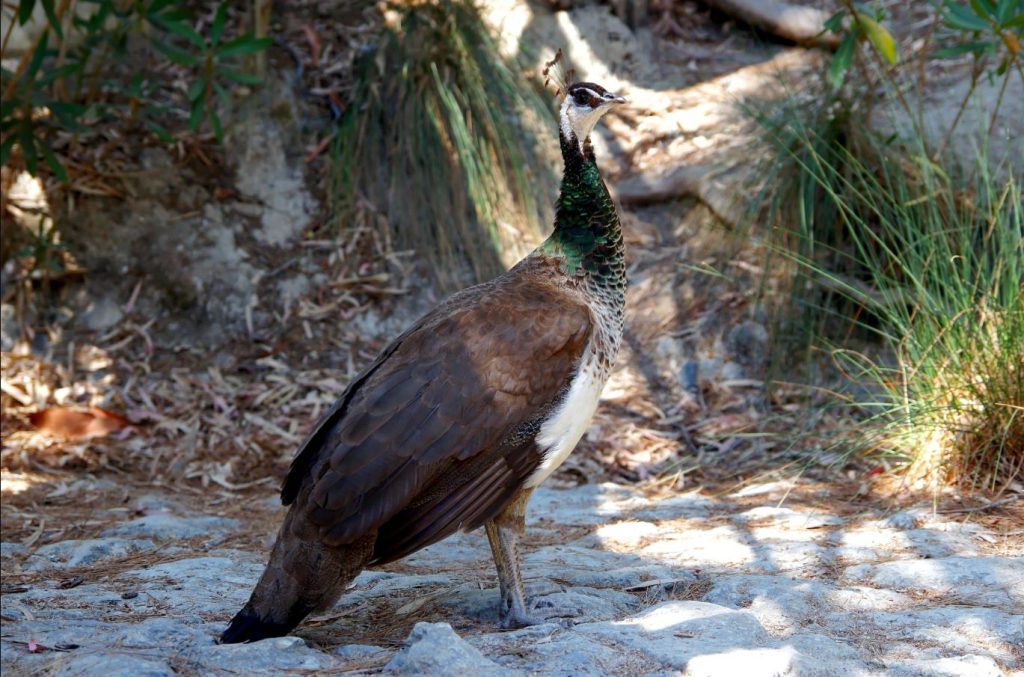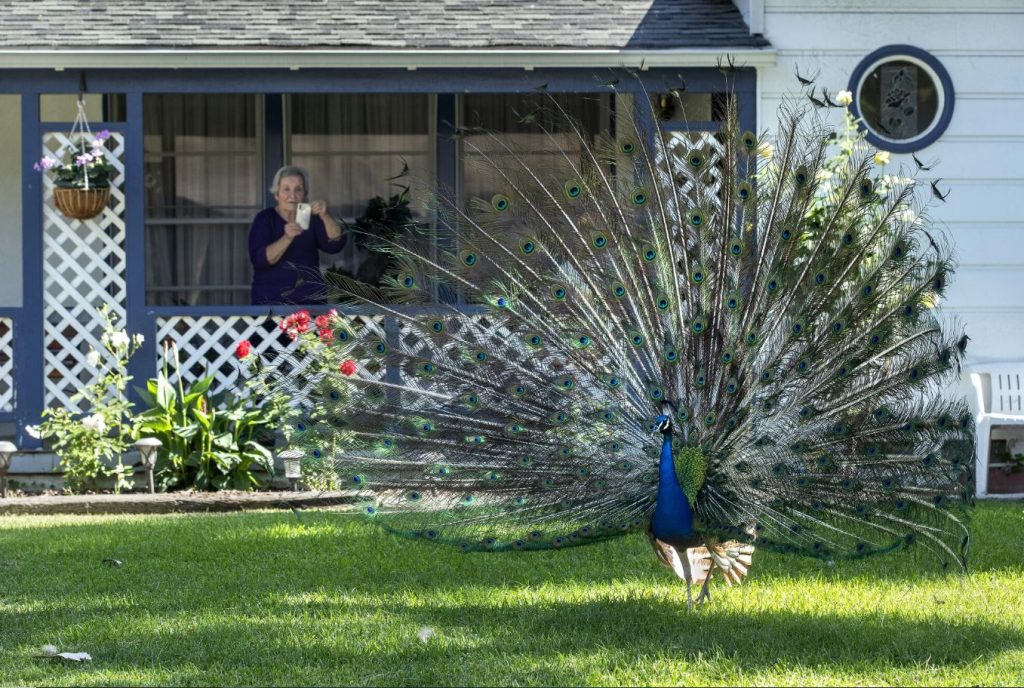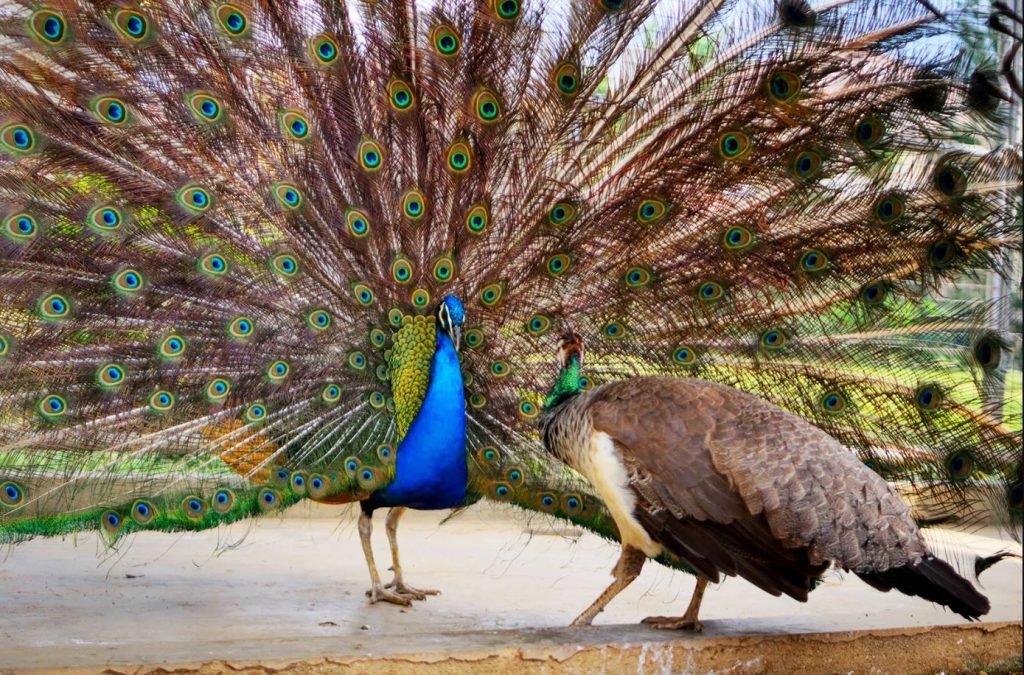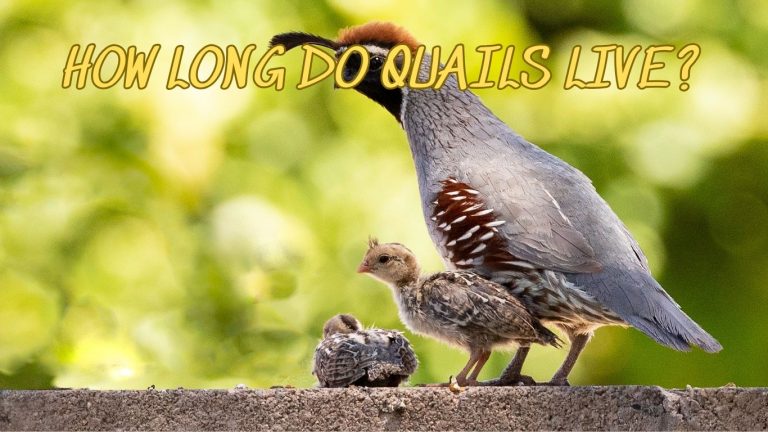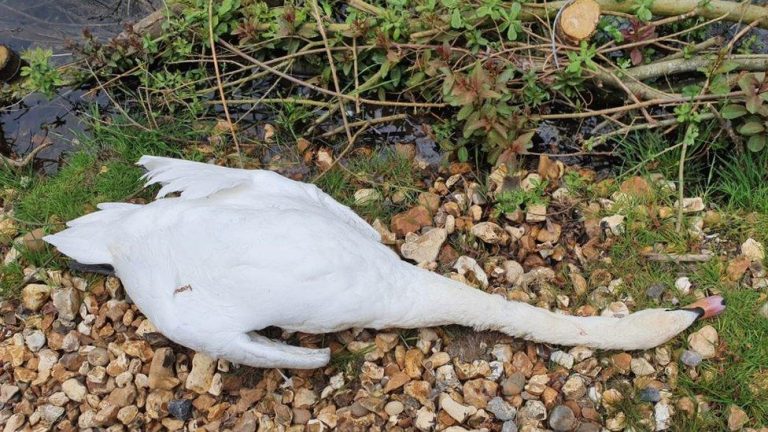Female Peacocks vs. Males: Surprising Differences You’ve Never Noticed
If you’ve ever been dazzled by the brilliant, iridescent fan of a male peacock’s tail, you’re not alone. But have you ever stopped to wonder about the female peacocks standing quietly nearby? As someone who’s spent more than 13 years observing birds in the wild, I can tell you this: the male peacock vs female peacock contrast is one of the most fascinating in the avian world.
In this article, we’ll uncover the key differences between male peacocks and their female counterparts, often referred to as peahens. From plumage and behavior to role in reproduction and vocalizations, you’ll see just how distinct – and essential – both sexes are to the survival and beauty of the species.
What Do You Call a Female Peacock?
One of the most common questions I hear from new birdwatchers is, “What do you call a female peacock?” It’s a great question—and one that even some seasoned wildlife fans get wrong.
Let’s get it straight: the word “peacock” actually refers only to the male of the species. The correct term for the female is “peahen.” Together, both males and females are referred to as “peafowl.”
So:
- Peacock = Male
- Peahen = Female
- Peafowl = The species as a whole (both sexes)
This naming convention applies to all three recognized species of peafowl:
- Indian Peafowl (Pavo cristatus) – the most famous, native to India and Sri Lanka, and the national bird of India.
- Green Peafowl (Pavo muticus) – found in Southeast Asia, less common and more endangered.
- Congo Peafowl (Afropavo congensis) – native to central Africa and quite rare in the wild.
Most people are familiar with the Indian Peafowl, especially because of the male’s bright blue feathers and massive train, which he fans out during courtship. But the peahen, with her more modest brown and green plumage, plays an equally vital role in the species’ survival.
Even though the word “peacock” is often used for both sexes in casual speech, understanding the correct terms—especially when discussing peacocks female vs. male—is essential for appreciating their unique traits and behaviors. Trust me, as a birdwatcher, using the right terminology can also earn you a lot of respect in the field!
Visual Differences: Plumage and Appearance
🌟 Male Peacocks: The Showstoppers
There’s no mistaking a male peacock. With his vibrant blue neck, shimmering green and gold hues, and a spectacular train of elongated upper tail coverts, he’s built for attention.
His train, often incorrectly referred to as his tail, can span up to 6 feet and features the iconic “eyespots” (ocelli) that he fans out in courtship displays. The actual tail feathers, hidden beneath the train, are much shorter and brown.
These physical features serve a purpose. According to the Cornell Lab’s All About Birds, the male’s colorful plumage is a result of sexual selection. Females choose mates based on train size, number of eyespots, and overall health.
“The more elaborate the display, the more likely he is to attract a mate,” says ornithologist Jessica M. K. of the Cornell Lab.
🌿 Female Peacocks (Peahens): Subtle Elegance
In contrast, peacocks female have a much more muted appearance. Their feathers are mostly brown or gray, with a bit of iridescent green on the neck. They lack the flamboyant train entirely.
Why the difference? It’s all about survival. Peahens must remain camouflaged, especially while nesting and raising chicks. Their understated colors help them blend into their surroundings and avoid predators.
Yet, don’t mistake subtlety for simplicity. I’ve always found female peacocks to be graceful and poised – a kind of natural beauty that’s just as striking in its own way.
Size and Physical Build
When comparing male peacock vs female peacock, size is another key difference.
- Males: Larger, about 3.5 to 4.5 feet in body length, with their trains adding several feet more.
- Females: Smaller, usually about 2.5 to 3.5 feet long, with no extended train.
Males are also heavier, often weighing between 9–13 lbs, while females range between 6–9 lbs.
From a distance, even without color cues, you can often distinguish the sexes just by body proportions and posture.
Courtship Behavior: How Male Peacocks Impress
One of the most exciting parts of birdwatching, for me, is witnessing the courtship dance of the male peacock.
In breeding season (typically spring), male peacocks gather in an area called a lek, where they fan out their trains, vibrate their feathers, and strut their stuff for the females.
This display isn’t just visual. Male peacocks also make low-frequency calls and produce infrasound (sound below the range of human hearing) to attract peahens – a phenomenon still being researched.
Female peacocks, meanwhile, remain the quiet selectors. They walk among the males, inspecting their trains, calls, and overall energy before choosing a mate.
Did You Know?
Studies show that peahens often prefer males with symmetrical eyespots and longer trains – indicators of genetic fitness.
Parenting Roles: Who Does What?
When it comes to parenting, female peacocks take on the heavy lifting.
After mating, peahens build nests on the ground, usually under shrubs or tall grass. They lay 3–6 eggs, which they incubate alone for around 28 days.
The male peacocks, meanwhile, do not participate in nesting or chick-rearing. Their role ends after mating.
Once hatched, the chicks (peachicks) stay close to their mother, who teaches them how to forage and avoid predators. Her muted colors continue to serve a purpose, keeping the whole brood hidden.
Vocalizations: Who’s Louder?
While both sexes make calls, male peacocks are noticeably louder and more vocal, especially during mating season. Their piercing “mee-ow” calls can travel over a mile and serve as territorial markers and mating signals.
Female peacocks make softer clucks and chirps, often communicating with chicks or signaling mild alarm.
Fun fact: Peacocks sometimes call before it rains. This has led some cultures to believe they can predict weather changes.
Social Structure: Solitary vs. Social
Male peacocks are generally more solitary outside of lekking season. They roam freely, defending territory and competing for mates.
Peahens, on the other hand, often form small groups, especially when raising chicks. I’ve seen these gentle flocks move together like a protective unit – sharing resources and keeping watch for danger.
Lifespan and Molting
Lifespan:
In the wild, peafowl can live 10 to 15 years, and sometimes up to 20 years in captivity.
Molting:
Male peacocks shed their elaborate train every year after mating season. So yes, all that beauty is seasonal. The molting process ensures they aren’t weighed down or vulnerable in the off-season.
Female peacocks also molt, but their plumage doesn’t change much in appearance.
Common Myths About Female Peacocks
Let’s bust a few myths:
- Myth: All peacocks have colorful tails.
Truth: Only male peacocks (peacocks) have the vibrant train. Peahens do not. - Myth: Female peacocks are just less-evolved males.
Truth: They are adapted differently for survival. Their role is just as vital to the species. - Myth: Peacocks are monogamous.
Truth: Peafowl are polygamous. Males mate with multiple females in a season.
Why Understanding Female Peacocks Matters
As a birdwatcher, I often see newcomers focusing only on the showy males. But if you ignore female peacocks, you miss half the story.
They:
- Make critical decisions in mate selection
- Raise the next generation
- Influence the evolution of male traits through their preferences
Their subtle beauty, complex behaviors, and ecological roles make them just as fascinating as the males, if not more so.
Final Thoughts from the Field
Over the years, I’ve spent countless early mornings observing both male peacocks and female peacocks. While the males may steal the spotlight with their vibrant displays, it’s the peahens who truly intrigue me with their quiet strength and essential role in the species’ success.
If you ever get the chance to watch peafowl in the wild or in a sanctuary, take a moment to study the peacocks female. Notice how she moves, how she interacts with her chicks, and how she chooses her mate. You’ll gain a whole new appreciation for this often-overlooked beauty.
Frequently Asked Questions (FAQs)
🔹 Are female peacocks colorful?
Not really. Female peacocks (peahens) are mostly brown and gray with some green on the neck, helping them stay camouflaged.
🔹 What is the difference between a peacock and a peahen?
A peacock is the male with colorful plumage; a peahen is the female, more subdued in color.
🔹 Do female peacocks have fans?
No. Only male peacocks have the extravagant fan-like train. Females do not.
🔹 Are female peacocks louder than males?
No. Males are generally more vocal, especially during the breeding season.
Read more about crows:

